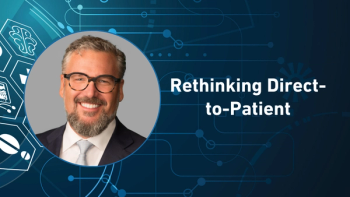
- Pharmaceutical Commerce - September/October 2010
'Shared Services' Organizational Model Has Value for Knowledge-Based Corporate Functions
Deloitte survey finds life sciences companies are consolidating some functions, whether in-house or outsourced
Over recent years, organizations have seesawed between centralizing corporate functions or decentralizing them. The former leads to somewhat tighter executive management, standardized methods and (potentially) lower overhead costs The latter leads to the creation of far-flung, entrepreneurial business units, but higher headcounts and a loss of central control over business practices.
In today’s life sciences industry, says Deloitte’s Jessica Golden, a principal in the company’s Service Delivery practice, the trend is toward setting up shared-services organizations (SSOs). One driver of this has been the ongoing consolidation of the industry, which has fostered many mergers and acquisitions, leading to an effort to consolidate operations. A second driver is the across-the-board effort to reduce headcount. A centralized HR function, for example, usually results in lower headcount as compared to each business unit having its own HR function.
“Many executives we know still subscribe to the idea that the shared model only ‘works’ for transactional, rules-based processes such as payroll, accounts payable/receivable, and similar activities,” she writes in a new Deloitte report. Existing SSOs in HR or finance can be expanded into “knowledge-based” services such as business analytics or applications development in IT; new SSOs can be developed for “value chain activities such as research, clinical development, and commercialization.”
An SSO, once carved out of the corporate structure, can be consolidated physically in one location, and can also be outsourced—although the outsourcing is not the key differentiation. The ability of the SSO to set up meaningful and effective performance measurements, and setting the expectations of the “internal customers” of the SSO appropriately, are important considerations.
Nor is the SSO model suitable for applying arbitrarily across an organization. Golden speaks of developing a “filter” to assess the readiness and suitability of the new structure: the overhead cost, and performance level, of an existing corporate function; the availability of suitable talent to operate the SSO; the readiness of an organization to accept a new structure. Although top executive support is essential to the successful development of an SSO, a bottom-up evaluation process can be more successful than a top-down, imposed process in making the conversion.
“If an existing function is performing well, the best thing to do might be leave it alone,” she says. On the other hand, problems like getting a master data file of customers that can be used across all functional areas, or high costs for maintaining staffs performing
similar work in different business units, can be signals that an SSO structure could be beneficial.
Centers of Excellence
When an SSO is extended to provide knowledge-based (as opposed to transactional) services, it’s helpful to think of it as a “Center of Excellence” (CoE) that brings together top expertise for a particular activity. CoEs can be set up for a wide range of existing functions in the value chain—Fig 1 shows areas of potential consolidation in commercial activities of life sciences companies. (There are similar opportunities in the clinical development, and regulatory management, spheres.)
“Commercial CoEs centered around market research, insights research, business development analysis, pricing, forecasting, sales and marketing capability development, and patient support call centers represent just a few examples of functions that, while different from each other, require similar functional and/or technical skills across all therapeutic areas or brands,” concludes the Deloitte report. PC
Articles in this issue
about 15 years ago
National illicit-drug use rose by 9% in 2009, say fedsabout 15 years ago
ISPE issues a white paper on supply chain securityover 15 years ago
Medco Will Acquire United BioSource Corp. to Guide Safe andover 15 years ago
Reverse Logistics Providers Upgrade Their Service Capabilitiesover 15 years ago
The Path Ahead for Enterprise ComputingNewsletter
Stay ahead in the life sciences industry with Pharmaceutical Commerce, the latest news, trends, and strategies in drug distribution, commercialization, and market access.




